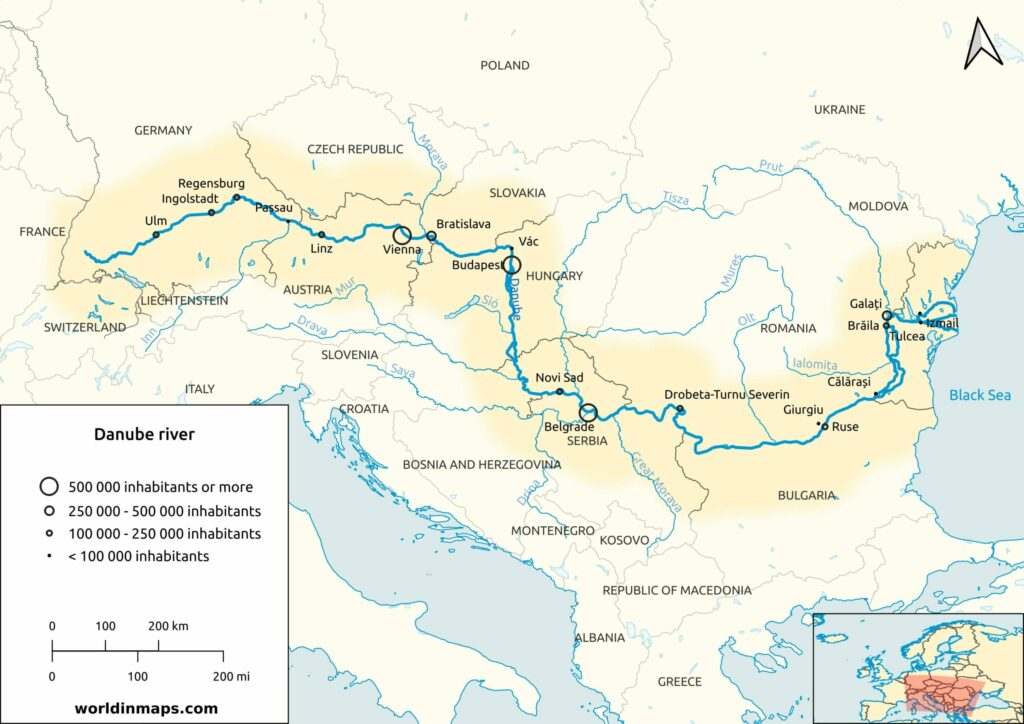Constanta, Romania (PortSEurope) March 24, 2022 – The crisis in Ukraine has raised the profile of the Port on Constanta, giving it new geopolitical and commercial importance. It is now challenged to handle extra cargo with speed, efficiency and safety.
With the Russian invasion of Ukraine of February 24, one of the first effects was the closure of the country’s Azov and Black Sea ports. This included the port of Odessa which normally handles around 35 million tons of cargo annually. When the conflict started and Russia blocked the ports, many cargo ships were already on the way to Ukrainian ports. They could not reach the ports and immediately looked for alternative ports to offload their cargo. Some vessels docked at Constanta could not leave for Odessa.
More PortSEurope news about the Ukrainian crisis
The CMA CGM vessel, Tanya, had to extend its stay in Constanta by two days, unable to travel to Odessa. The cargo destined for Odessa was stored on the quays of Constanța, to be transported onwards by road or by train, to be transported onwards by road or rail. On February 26, Tanya left for Piraeus, Greece.
Port of Constanta
Thus, Constanta, 300km from Odessa and with the port facilities, became the obvious solution. It is now coping with vessels which had to turn back from the Ukrainian coats, and ships which were harboured at Constanta, but did not leave for Ukrainian ports, like the Tanya. The containers were building up at the port. The port has now become an essential route to market and is set to remain so.
The port’s infrastructure has managed so far to cope with the extra cargo. Daily round-the-clock work is managing the situation. One of the key factors now is the ability of CFR Marfă to transport the cargo onwards into Europe. CFR Marfă is the state-owned freight railway business of Romania.
Freight railways to Europe
Bogdan Huțucă, PNL (National Liberal Party) deputy and chairman of the Budget-Finance Commission from the Chamber of Deputies, said that one of the challenges that Romania will have in the next period will be for the goods that arrive in the Port of Constanța, destined for Ukraine, to be transported quickly and safely, through CFR Marfă.
“Let’s hope that Romania’s railway infrastructure will allow the speed of freight transport, so as not to create blockages in the Port of Constanța. The railway traffic capacity may be affected due to the small number of bogies (wheel infrastructure) operated by CFR Marfă”, he added.
“Taking into account the quantity of goods to be transported back and forth, in the current situation, the government will have to act urgently, so that there are no blockages for the transfer / transport of goods from Constanța Port to Ukraine”, concluded Huțucă.
The future of the port of Constanta
The port already has railway links with Europe. With the conflict set to last quite some time, these links might have to be upgraded and may be carrying extra cargo volumes for years to come. This will require European Union investment to link the port better with the TEN-T transport network.
The proposal released by the European Commission in December 2021 established the European Transport Corridors (ETC). It is composed of nine corridors covering specific areas: Atlantic, North Sea – Alpine, North Sea – Baltic, Scandinavian – Mediterranean, Baltic Sea – Adriatic Sea, Rhine – Danube, Mediterranean, Western Balkans, Baltic – Black – Aegean Seas. Constanta needs to be part of this plan.
The Russian invasion of Ukraine means that exporters, companies and countries, are diverting cargo traffic away from Russian soil. European borders with Russia and associated seaports are closed, so to maintain exports to Europe, other routes are being developed.
PortSEurope: Azerbaijan Railways changes exports routes to avoid Russia
The Trans-Caspian International Transport Route (TITR) will allows traders to bypass Russia, which until now sanctions the transit of certain types of goods through the country. A number of Russian entities are under sanctions from the international community following Russia’s annexation of the Crimea in 2014. This situation has clearly worsened with further widespread sanctions imposed after the Russian invasion of Ukraine. The importance of this route is underlined with the inclusion of Georgia and Azerbaijan in the European Union (EU) TEN-T network.
TITR, also known as the Middle Corridor, combines the countries participating in the new Silk Road project. Its members are leading maritime and transport companies from Kazakhstan, Azerbaijan, Georgia, Ukraine, China and Turkey.
The Port of Constanta’s new geopolitical and commercial importance could become long-term due to changes in regional trade routes and become the subject of investment itself.
Copyright (C) PortSEurope. All Rights Reserved. 2022.

